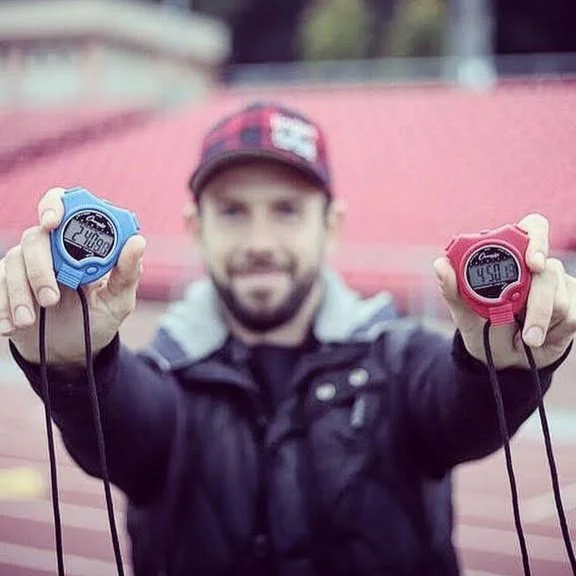Training Zones: What are they good for?
We all hear about training zones pretty regularly… but what are they and why do we use them? Here are some tips on training zones for your heart rate on general exercise intensity. Below each I listed some examples of what types of races would utilize each of these zones.
One thing to understand, zones will differ per activity. So… your HR zones in running are DIFFERENT than your HR zones on the bike. We have special benchmark tests to determine these zones… let me know if you are interested in learning about that.
Cardiovascular Training Zone Summary
Zone 1: Healthy Heart Zone (Warm up) --- 50 - 60% of maximum heart rate: The easiest zone and probably the best zone for people just starting a fitness program. It can also be used as a warm up for more serious walkers. This zone has been shown to help decrease body fat, blood pressure and cholesterol. It also decreases the risk of degenerative diseases and has a low risk of injury. 85% of calories burned in this zone are fats!
General Performance Use: Warm Ups, very easy days of recovery, moving blood. No races really need to be performed in Zone 1
Zone 2: Fitness Zone (Fat Burning) --- 60 - 70% of maximum heart rate: This zone provides the same benefits as the healthy heart zone, but is more intense and burns more total calories. The percent of fat calories is still 85%.
General Performance Use: This zone can be used frequently in Ultra-Endurance and Marathon performance, also bike touring events. Depending on the athlete’s fitness, Ironman biking and running pace might be the higher end of Zone 2 (Z2+).
Zone 3: Aerobic Zone (Endurance Training) --- 70 - 80% of maximum heart rate: The aerobic zone will improve your cardiovascular and respiratory system AND increase the size and strength of your heart. This is the preferred zone if you are training for an endurance event. More calories are burned with 50% from fat.
General Performance Use: Getting more use into IRONMAN for more fit athletes, but very useful zone for 70.3 IRONMAN distance and regular running marathons. A 70.3 distance race will vary from middle to higher end Zone 3 (Z3+) and a running marathoner should aim to finish the last 10 miles or so building into the higher end Z3.
Zone 4: Anaerobic Zone (Performance Training) --- 80 - 90% of maximum heart rate: Benefits of this zone include an improved VO2 maximum (the highest amount of oxygen one can consume during exercise) and thus an improved cardiorespiratory system, and a higher lactate tolerance ability which means your endurance will improve and you'll be able to fight fatigue better. This is a high intensity zone burning more calories, 15 % from fat.
General Performance Use: Much more running races and Olympic Triathlon zones. Your 10k should be in Zone 4, both bike and runs for an Olympic distance tri should be pushed into Zone 4 (Z4+ for more fit athletes). A 5k will have Zone 4+, but will also reach into Zone 5 at times.
Zone 5: Red Line (Maximum Effort) --- 90 - 100% of maximum heart rate: Although this zone burns the highest number of calories, it is very intense. Most people can only stay in this zone for short periods. You should only train in this zone if you are in very good shape and have been cleared by a physician to do so.
General Performance Use: Not going to last for long. Short efforts… you will hit Zone 5 in a 5k effort for more fit athletes, but will be the main intensity for hard efforts under 15 minutes. Rarely the entire zone for an effort, but generally will be right in-line with Z4+. Dominant in track events like 100m, 200m, 400m, and 800s where you will find a very tight mix of Z4+/Z5. The only way to spend more time in this zone to to be very strong and fit, otherwise the body won’t be able to handle this intensity.
How do I find my Training Zones?
A really simple, home-made method to determine your training zones without any real testing:
a) Find your resting HR (best if taken first thing in the morning)
b) Use the equation 220 - age - resting HR x (% of HR you want, in decimals) + resting HR
eg.) for 70% HR = 220 - 28 - 60 x (.70) + 60 = 152 beats per minute (bpm)
- so 70% of my max HR is 152bpm
c) Do this for all the %s listed above, and set your HR zones.
d) Go OUTSIDE AND PRACTCE!!!! The only way to really understand your HR zones is to try it
and practice it…. otherwise you will never understand why we actually talk about them!!!
A Few Methods for Cardiovascular Training
Base Cardio - Stay in zones 1 – 3. Key for Recovery work
Tempo Cardio - Working around thresholds and your race paces (varies per race distance). Improves Lactate handling.
Building / Dropping / Pyramid Sets - Gear changing within a workout, learn to find different paces and intensities, or make 1 intensity last LONGER.
Speed Intervals (Lactate Threshold/AT) – Ample Rest intervals, allow Lactate tolerance to improve. Also can help train neuromuscular efficiency.
Continuous Intervals – Minimal Recovery, improve muscle function while fatigued (i.e Yasso 800s, or loads of Nth Degree Track Tuesday sessions!)
VO2 max Training – 20 minutes! Spend time at VO2 max. A 5k effort has been shown to be excellent training for VO2 max.
Sprint Intervals - Max Intensity, look for new peaks. Maximize rest to have high power per set. Perform with ample days recovery.
